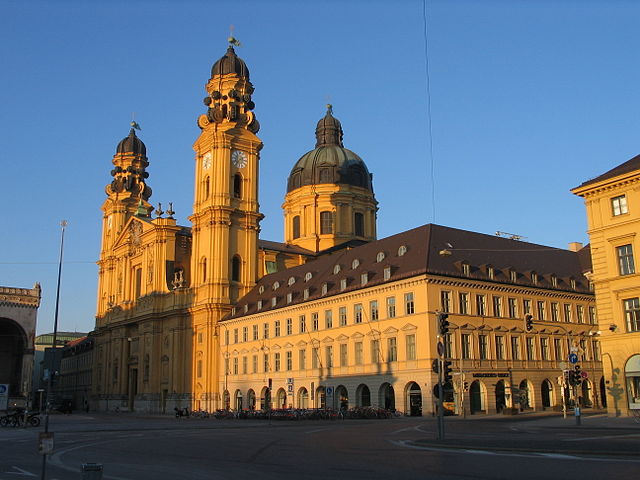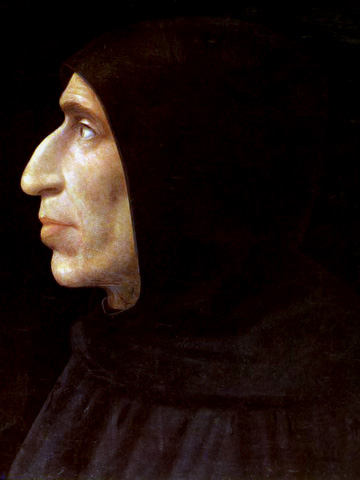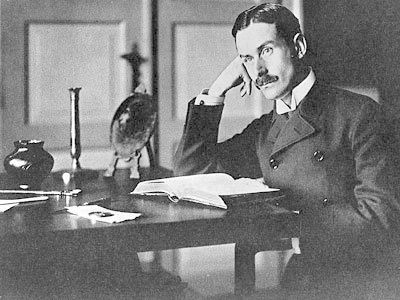A friend of mine is named Antonia, after A.S. Byatt, which was reason enough for me to want to read the author. If any writer can inspire someone so much that they are willing to name their child after them, then that author must be doing something right. I asked my Antonia where to begin with Byatt (thankfully, Antonia is a fan of her namesake) and she suggested I try this collection of two novellas, Angels and Insects. The two stories here, “Morpho Eugenia” and “The Conjugial Angel” are both set in the Victorian period and engage with anxieties relating to the advance of science and its relation to the spirit.
“Morpho Eugenia” tells the story of how a young explorer’s experience of the Amazon and study of Darwin draw him into conflict with the patriarch of an English country home who does not want to see science undermine his religious beliefs. “The Conjugial Angel”, meanwhile, is the story of a group of spiritualists at a séance and the relationship between Emily Jesse, née Tennyson, and her dead fiancé, Arthur Hallam, who was immortalised through her brother Alfred’s poem “In Memoriam”.
Byatt is often named as a postmodernist English writer, and Angels and Insects provides ample evidence for that claim. These novellas are formally inventive, with scientific quotations, real characters, stories-within-stories, and plenty of poetry. At the same time, their settings and topics make them cousins to the German novellas of the nineteenth century, which like Angels and Insects were highly symbolic works, densely packed and interpretatively complex. Byatt’s intelligence is unmissable – she clearly did her reading, whether it be on mediums or on entomology. But is there a heart here, too? I propose to focus on the first story, “Morpho Eugenia”, to answer.
Morpho Eugenia
Morpho Eugenia is a clever and decidedly strange novella. It begins with William Adamson having returned to his benefactor’s home from an expedition to the Amazon, penniless after a shipwreck. Lord and Lady Alabaster have a great many children, and William finds himself falling in love with the eldest daughter, Eugenia. A marriage would be inappropriate, because of the differences in their stations, but William so impresses Lord Alabaster that eventually he grants him his daughter’s hand, and the two end up wedded together. At the house and surrounding estate, William works to sort through Lord Alabaster’s collection of scientific specimens – though the old man does not leave the house himself, still he has his passions and interests.
In addition, William helps Lord Alabaster with a book the latter is working on. Lord Alabaster is determined to prove the “argument by design” – that nature’s complexity proves God’s existence. William, a Darwinist, is to help Alabaster by challenging his ideas. William’s final role is to provide some education for the younger Alabaster children, and to this end he builds various exhibits in the house – anthills to be monitored, and the like. In this he is helped by the servants and by a young woman attached to the household, Matty Crompton.
Insects and People
At first “Morpho Eugenia” appears to set itself up to be a standard tragic love story, as so many novellas are – I thought of Storm’s “Aquis Submersus” and Hofmann’s “Sandman” when William wrote in his diary that fatal phrase “I shall die if I cannot have her”, referring to Eugenia. Instead, William marries Eugenia quite successfully, and they produce many children of their own over the course of the story. But at this point the story seems to take on another classic novella idea – that of madness. William has returned from a world untouched by civilization, as his fellow Englishmen might understand it, to a luxurious country estate. Yet from the first moments, when William takes part in a ball, he finds himself noting many similarities between the two worlds- from the elaborate dresses of Amazon women and young British ladies, to the dances themselves.
As time goes on, these comparisons become more and more forceful. Eugenia, whose name connects her to the butterfly, morpho eugenia (of the novella’s title) is described like an insect in her pregnancy: “his wife slept alone in her white nest, and swelled slowly, developing large breasts and a creamy second chin.” When Eugenia keeps producing twins, the comparison gets even stronger – she seems less and less human to him. Meanwhile, the aristocratic house and the anthills are also a site of obvious comparison. For the powerful figures of both places are served by countless servants, darting through dark corridors. William’s sanity seems constantly under threat of splitting in this world, and he longs for the Amazon he left behind.
But with that said, I think Byatt’s story hints at a madness that never truly arrives. William does not do anything in the novella, and his thoughts ultimately remain more or less under control. Perhaps the place where the insect-human comparison is most forceful is in the story’s treatment of the aristocracy, who are depicted as either indolent, or selfish, or outright cruel. Edgar Alabaster, who despises his new brother-in-law, is once found by William as he forces himself upon one of the servant girls. When William tries to stop him, Edgar declares that she – still a child – is “a nice little packet of flesh”. What appears to be William’s unstable psyche is used more effectively for social critique, suggesting that human beings may not be nearly so respectable as our insectoid brethren.
Religion and Science
William’s father, a butcher, believed in a God of hellfire and brimstone. William himself has little sympathy for religion as a result. Both stories in Angels and Insects are set after Charles Darwin’s work had revolutionised our understanding of the development of life on earth, and many of the key characters feel the impact of Darwin’s views upon the validity of their faith in God. Lord Alabaster has collected crate upon crate of animal and insectoid specimens from around the world, and he asks William to “make sense of it, lay it all out in some order or other” during his stay. His decision reflects a feeling that religion can no longer order the world, and that it must surrender that right to science. At the same time, Alabaster – who trained as a priest – is unable to relinquish his faith. Over the course of the novella, he makes spirited – but unbelievable – defences of God’s creation. At one point he suggests that love provides evidence of God’s existence. But William is ultimately only annoyed by these suggestions, based as they are not on reason at all.
There are many who refuse to believe in a world without God. When William raises the possibility to Alabaster the latter is aghast: “I cannot believe that, Mr Adamson. I cannot. It opens the path to a dark pit of horrors.” And “Morpho Eugenia”, with the constant presence of insects, reducing human beings into creepy-crawlies, certainly hints at what a horrific world such a godless world would be for some of its inhabitants. And yet at the same time, it falls into the clear anti-aristocratic undertone of the work. If there is no God, then why do the idle rich inhabit great country houses, while servants toil and suffer rape and abuse without a word of complaint. The Alabaster house becomes a microcosm of the world, and it shows how fragile that world is.
Formal Ingenuity
“Analogy is a slippery tool” says William at one point. “Men are not ants”. This is perhaps one of the key phrases of the novella. Another is “things are not what they seem”, which Matty Crompton offers. Byatt is great at confusing us by the sheer density of her reference and allusion. She quotes from the scientific treatises of the day freely alongside poetry, so that we feel she is hinting at much more than what she spells out. Men may not be ants, but “Morpho Eugenia” asks us to what extent a comparison is valid, and what kind of a comparison. Each metaphor is developed constantly, and always taken in new directions. My only complaint is that Byatt’s descriptions are far too rich, too colourful, so that she can belabour her ideas too heavily at times. The story would have been better, shorter, in other words.
To be told that things are not what they seem is to encourage us always to be on the lookout for new interpretations. Byatt includes a story, written by Matty Crompton, alongside scientific descriptions written by William himself. Each of these appears only tangentially related to the story, at least at first. But we know that something is there, and if we have the energy for it, certainly the story has a wondrous richness to it that will reward further thought and analysis.
The Heart of the Story
Yet I cannot say it came together perfectly. Leaving aside the overly flowery descriptions, and the occasionally clunky dialogue – characters often speak as though they are scientific treatises themselves – another problem in “Morpho Eugenia” is a certain absence of heart. William’s love for Eugenia turns out to be false, and this is understandable. There’s an easy moral in that about the fallibility of the heart and whirlwind romances. But the actual meat of the story has very little to get us emotionally invested. William’s madness never goes anywhere, meaning that we just have to read repeated unpleasant descriptions of women as egg-laying ants and vice versa without there being anything at stake. In the final ten pages of the story there is a turnaround, suddenly there is a character worth caring about and some action we might call heroic, but it is rather too late. There’s too much mush beforehand.
The Conjugial Angel
The second novella of Angels and Insects, “The Conjugial Angel”, is focused on a group performing seances to communicate with the world beyond. This kind of thing was popular in the latter part of the 19th century – there’s a bit of it in Anna Karenina, for example – and was inspired by the works of the Swedish mystic, Emanuel Swedenborg, who had apparently visited Heaven and had a guided tour. There are several characters at the séance, but the focus is on Emily Jesse, who was once Emily Tennyson, sister of Alfred, Lord Tennyson. Emily was once engaged to Arthur Hallam, about whom Tennyson wrote his great long poem “In Memoriam”. That poem is quoted liberally throughout the text, which is nice because it’s a lovely piece of work.
During the séance Emily hopes to hear from Arthur. Though she has now married – and been married for decades – still she treasures the memory of her first love.
Representing the dead
I do not want to go into the details of “The Conjugial Angel” – it has an even weaker plot than “Morpho Eugenia”, and the themes do not come together quite so well. However, what it does do of interest is depict the dead. Authors regularly use real figures in their stories – after all, it is part of the appeal of historical fiction. But using dead people is another matter. Even today, in our comparatively godless world, there is something of a taboo on the dead – we try not to speak ill of them. Byatt brings Arthur Hallam back as a spirit to guide the automatic writing at the séance, and I felt more than a little uncomfortable by the whole idea. I began writing in my margins that this was hugely inappropriate and morally absurd.
But then Byatt gives our medium, alone at home, another vision of him. I shall not spoil the details but it is one of the most extraordinary sequences I have yet read in a work of fiction. There was a gruesome, terrifying intensity to it. I felt as though Byatt truly had brought the dead man, maggot-stained, back to life, and I was so impressed. For that reason alone this novella is worth reading.
Conclusion
German novellas, which I know well, are focused on individual characters much more than on the plot or society which form the centres of novels. The force of a strong character can sustain a novella-length work, but rarely manages to sustain something longer. The plot of a novella cannot be a situation, because these are better suited for short stories; while a drawn-out plot often needs the development of a novella to truly draw us in. For that reason, though novellas are jewel-encrusted – densely symbolic and full of things to think about – they work best when driven by a character. The character of William Adamson does not provide sufficient backbone in “Morpho Eugenia” to make us want to keep reading, however clever the work is. The really interesting character is hidden from view until near the end, at which point we’ve already decided whether we’ll read the story or not.
I anticipate criticism from those who’ve read the story that even this is part of Byatt’s argumentation, such as: the character cannot be more prominent, because the story is drawing our attention to certain oppressive structures, class and gender among others. Even so, a story must make us want to read it. “The Conjugial Angel”, meanwhile, is burdened by the focus Byatt places on the different characters. Emily Tennyson’s story is the most interesting, and with less of the trimmings and lengthy descriptions, it could have been even more effective.
Byatt is extremely intelligent, and I like her formal ingenuity. But my criticism actually has nothing to do with her postmodernism, and everything to do with the foundations of stories, such as they have existed for thousands of years. Her descriptions are too long, too florid; her characters don’t always speak like human beings; and the stories would be more effective, thematically and from a storytelling perspective, if they were a bit shorter and more focused.
Yet all the Angels and Insects collects two provocative and interesting examples of the novella genre, and it is a book well worth trying.


